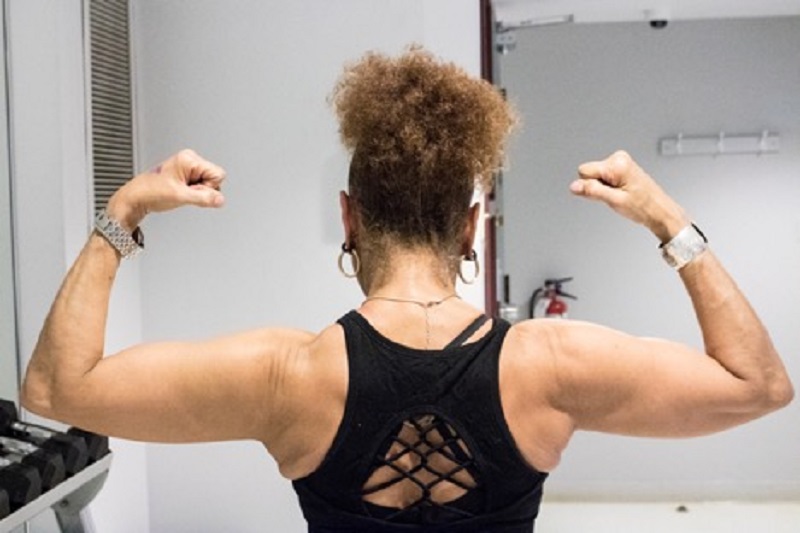How a 69-year-old personal trainer proves age is just a number
While most people spend their early 60s planning their retirement, Diane Brown decided to pursue a new career: becoming a personal trainer.
“I had never thought of pursuing it before,” said Brown, now 69 years old. “I was a single mother when I was younger, and after that, I was always worried about providing for my child.”
Brown worked random jobs most of her life in order to pay the bills. At the age of 61, Brown realized she wanted to transform her passion for health and fitness into something she could monetize––and consequently, do for a living. Today, she’s a personal trainer and also works as a floor clerk at a Jean Coutu Pharmacy, where she’s been for the past 20 years.
“I don’t want to stop working,” Brown said. “I thought I’d want to retire, but really, I won’t retire until they kick me out,” she said with a loud chuckle. As a personal trainer, she has trained many people, whose ages ranged from 30 to 80.
“I don’t think age should be a factor in terms of whether or not you exercise,” Brown said. “The way I approach fitness is it’s a way to be the best version of yourself.”
For Brown, anyone can step forward and try their hand at working out—she believes there are no excuses. “Age really isn’t an excuse,” said Brown. “Neither is time. If you tell me you’re too busy to work out, I’ll tell you about a seven-minute power workout that strengthens your core. If you tell me you can’t afford the gym, I’ll tell you how to turn your living room into one. There’s really no reason not to be the best version of yourself.”
When Brown decided to become a personal trainer, she wondered whether her age would make clients hesitant about working with her. But she quickly realized that her fitness level coupled with her age was the very thing that attracted clients to her.
“I guess they could tell I was the real deal,” Brown said with a laugh. “But to be honest, I don’t really like being told I look good ‘for my age,’” she said. “I look and feel good––doesn’t matter how old I am.”
Doctors have told Brown that her body functions as if she’s 35 years old. “I feel young,” she said. “But of course, there are days where my body tells me, ‘Okay Diane, you need to take a break.’” Sometimes, her toes ache; other days, her mind will want to lift weights, but her body won’t let her. “I have the hardest time stopping,” she said. “I’m working on that.”
Brown tries to give herself time off when she can but finds it hard to pause her passion. “I just genuinely enjoy it,” she said. “I love helping people realize their full potential, and I love working with others. I want to help them—it’s as simple as that.”
Brown’s passion for helping others with their fitness goals also stems from a certain place: control. “I couldn’t control most of my life,” she said thoughtfully. “Things happened to me, and most of them were bad. But with fitness, I have power—I can control how I treat my body, and as a trainer, I can exert what little control I do have to help someone become better.”
Yet, Brown still hopes she can learn to let some control go. “I’m a Libra after all,” she said. “I’m all about the balance. I just have to give myself a few talks sometimes. I’m still learning,” she laughed. “After all this time, I’m still learning to be the best version of myself.”
Brown learns from continuous reading
While Brown helps others, she also partakes in numerous competitions—specifically bodybuilding competitions.
“I came in third place last year at the International Drug Free Athletics awards, for bodybuilding,” Brown said with a proud smile. “I work hard, and I definitely want to be acknowledged for that.”
With a learning disability, it was difficult for Brown to retain complex information about the human anatomy. “I had a hard time passing my fitness test so that I could become a personal trainer,” she said. In her cluttered apartment, she digs through piles of books and finds a binder, filled with pages about the human body. “I studied this day and night,” she said fondly as she flips through the thick pages. “I taught myself everything. Never went to school. Just read.”
Brown credits numerous health and fitness magazines as her source of knowledge. “I buy them and read them, cover to cover,” she said. “That’s how I learned everything—from my own fitness to how to train others to attain theirs.”
Photos by Sania Malik.
